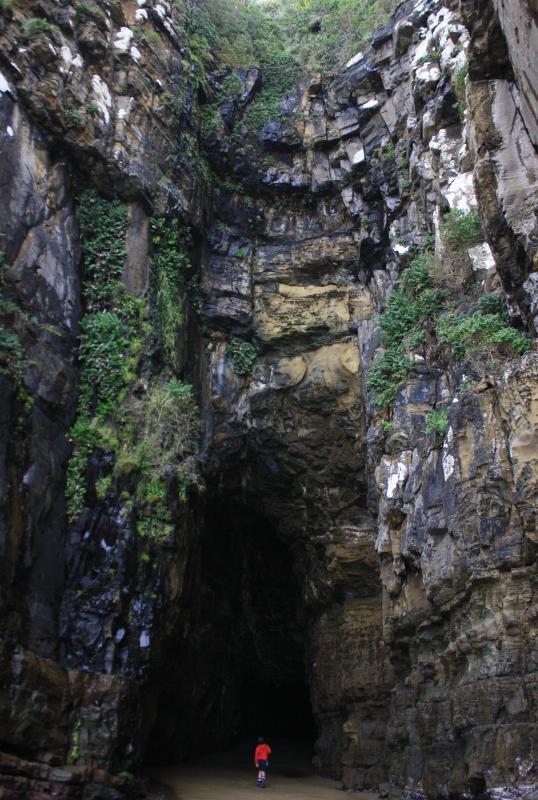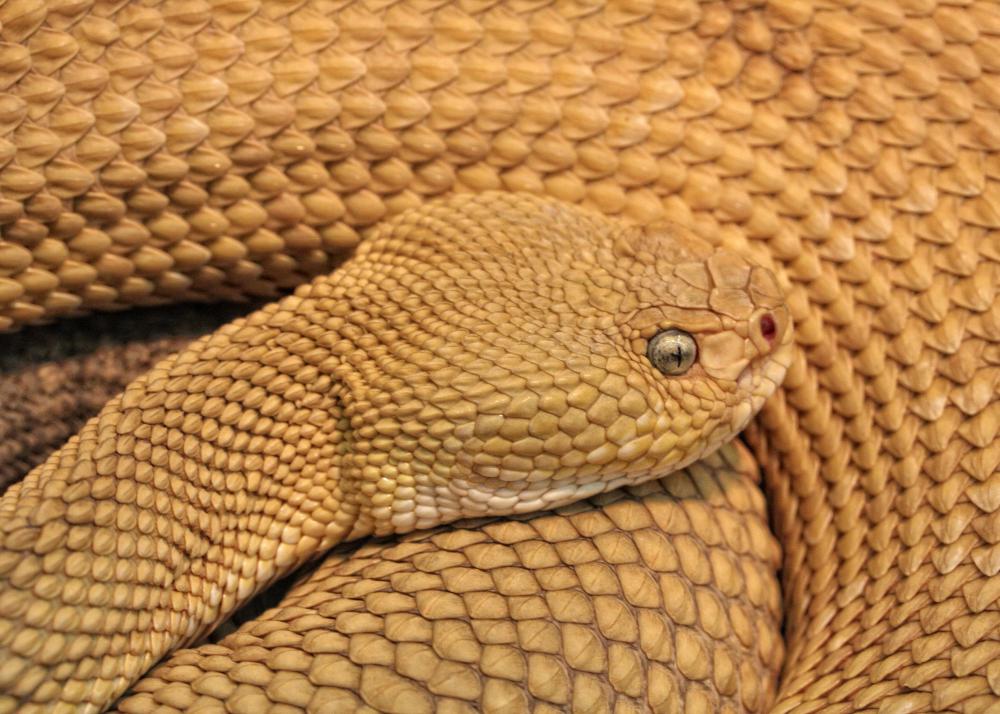At AllThingsNature, we're committed to delivering accurate, trustworthy information. Our expert-authored content is rigorously fact-checked and sourced from credible authorities. Discover how we uphold the highest standards in providing you with reliable knowledge.
Where do Snakes Live?
There are well over 3,000 known species of snakes in the world, with the number increasing as new ones are discovered. Geographically speaking, they are found in all the continents except Antarctica, but they are absent from a number of islands, including Greenland, Iceland, Ireland, and New Zealand. Snakes live in a wide variety of habitats, but are restricted in their distribution because, like other reptiles, they are cold-blooded and therefore have less control over their body temperatures than mammals. A snake must regulate its temperature by seeking out warmer or cooler conditions, as required. In regions with cold winters, snakes will go into a kind of hibernation in autumn, seeking out suitable frost-free places to keep warm.
Distribution

The majority of snakes live in tropical climates. Mammals, such as humans, can regulate their body temperatures internally, but snakes are dependent on their environment for maintaining a suitable temperature. When they get too hot, they move into the shade, and when they are too cool, they move into a sunny area. It is easier for them to live in areas where the temperature does not drop below 50°F (10°C), and, although they can survive at temperatures close to freezing point, they are not thought to be able to survive if their body temperatures drop below freezing. They are more efficient in warm weather, and in tropical areas, they can be active throughout the year.
Surviving the Winter

Snakes that live in temperate climates undergo a kind of hibernation known as brumation in the winter. In this state, the reptile remains awake, but inactive. It does not need to eat, and can survive many months without food, but it will emerge from time to time to drink water.
While in brumation, it will mostly remain hidden in a place that is protected from frost. These may be hollow tree trunks or stumps, caves, burrows within soil or sand, or under piles of leaves. Often, decaying organic matter in these places will give out some heat, keeping the temperature above freezing point. Sometimes a snake will share a hiding place with many others: this helps to keep temperatures up. In populated areas, snakes may occasionally venture into human dwellings or other buildings, such as huts, sheds or garages, or into piles of rubbish or garden waste, with a view to spending the winter there.
Habitats and Adaptations

Snakes have adapted to a variety of very different habitats. They can live in forests, prairies, deserts or even bodies of water, but will typically be found where there is an ample supply of food, such as rodents, small reptiles, birds and frogs. Snakes eat their food whole and often while it is still alive. While some types — for example, boa constrictors — will squeeze their prey to death before eating it, most unhinge their jaw and swallow their prey alive. A snake’s teeth are pointed backward, which prevents the live prey from darting out of the snake’s mouth before it swallows.

At first glance, it would seem that all snakes are built the same way, just in different sizes and colors; however, on closer examination, differences in body plan can be found, determined by the environment in which the snakes live. In tropical forest areas, many species live in trees, and these tend to have relatively long, slender bodies, suitable for wrapping around branches. Those that spend most of their time on the ground are more compact, with bodies made for burrowing. Snakes that live near water often have a flattened shape that helps them swim efficiently.
Snakes and People

Snakes often inspire fear in humans, but they will generally do their best to avoid people. The reptiles are very sensitive to vibration, and will respond to footsteps by quickly slithering off to a suitable hiding place. Even in areas where these creatures are common, people may never see one, and might pass very close by one without being aware of it. For people with an interest in snakes, often the best chance of observation is when one is sunning itself on open ground or a rock, to keep up its body temperature.

Venomous snakes do pose a potential hazard, but they will not attack people unless they feel threatened, and cannot escape. Snake bites are extremely unlikely when walking outdoors; the greatest risk is in disturbing a resting snake in its hiding place. In areas where venomous snakes are known to occur, caution should be exercised in reaching into natural crevices or, in populated areas, anything in which a snake might hide, such as pot, a pile of household rubbish or garden waste, or even an old boot.
Frequently Asked Questions
What types of habitats do snakes live in?
Snakes are incredibly adaptable and can be found in a variety of habitats. They inhabit forests, grasslands, deserts, wetlands, and even aquatic environments. Some species, like the Green Anaconda, thrive in water, while others, such as the Sidewinder rattlesnake, are well-suited to desert life. Their ability to adapt to different temperatures and ecosystems contributes to their global distribution.
Can snakes live in cold climates?
Yes, some snakes can live in cold climates. For instance, the Common European Adder is found north of the Arctic Circle in Scandinavia. Snakes in colder regions often hibernate during the winter months to survive the low temperatures. They seek out hibernacula—sheltered spots like burrows or rock crevices—to maintain a stable temperature until warmer weather returns.
How do snakes adapt to desert environments?
Snakes living in deserts have evolved several adaptations to cope with extreme conditions. They exhibit behaviors such as burrowing to escape the heat and being nocturnal to conserve water and energy. Physiologically, they have efficient water retention mechanisms and scales that minimize water loss. The Horned Viper, for example, has a specialized body shape that allows it to move easily over loose sand.
Are there snakes that live in the ocean?
Yes, there are sea snakes that live exclusively in marine environments. These snakes have adapted to life in the water with paddle-like tails for swimming, special glands to excrete salt, and the ability to absorb oxygen through their skin. Sea snakes are primarily found in the warm coastal waters of the Indian and Pacific Oceans, where they hunt fish and eels.
Do snakes inhabit urban areas?
Snakes can indeed be found in urban areas, often in search of food or shelter. They may live in parks, gardens, and near water bodies within cities. Some species, like the Garter snake, are more tolerant of human disturbance and can coexist relatively well in suburban settings. However, urbanization poses significant threats to snake populations due to habitat loss and fragmentation.
What is the impact of climate change on snake habitats?
Climate change significantly impacts snake habitats, altering temperature and precipitation patterns that can affect their survival. According to research, shifts in climate may lead to changes in snake distribution, with some species potentially expanding their range while others face habitat loss. Additionally, extreme weather events can directly threaten snake populations through increased mortality rates and disrupted breeding cycles.
AS FEATURED ON:
AS FEATURED ON:
















Discussion Comments
Do snakes live in termite colonies found in gardens?
Where do snakes migrate to?
How do they reproduce?
this would be better for people to read for projects if you would tell more about reptiles in general rather than just stakes because that's just unhelpful and unimportant for anyone to care about.
Burrows, I think?
what is the name of the hole in which the snakes live in?
Post your comments